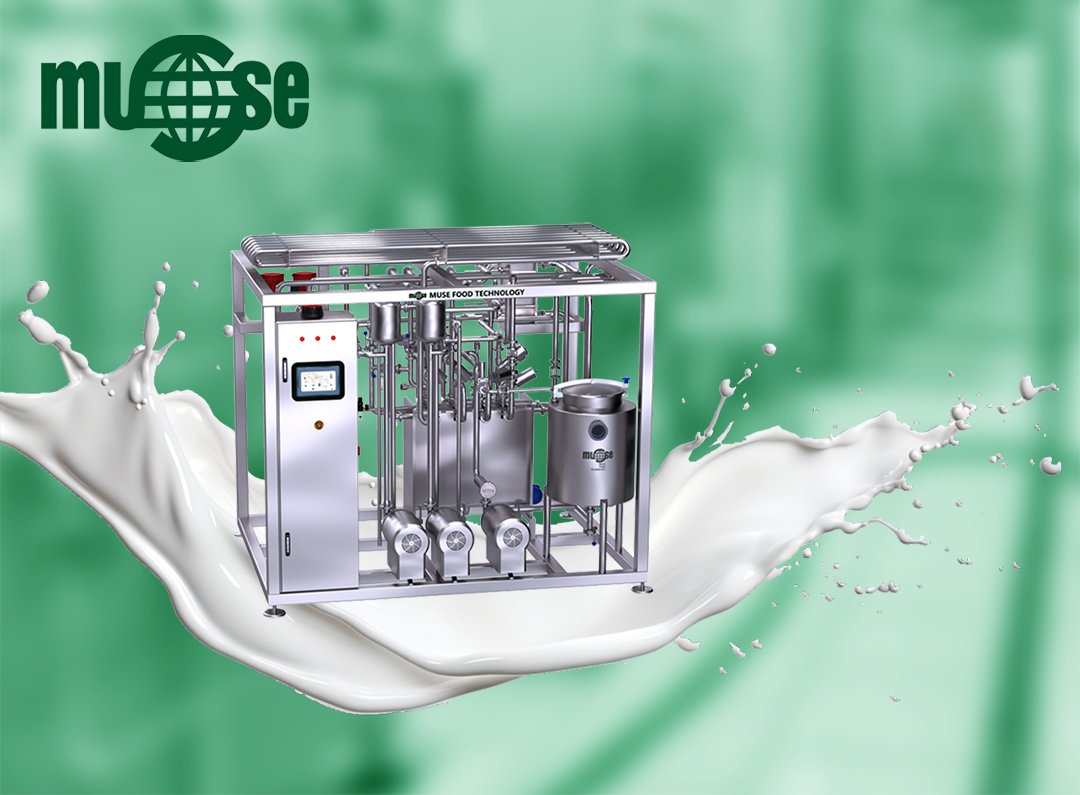
Modular Pasteurizer Systems: Design and Application Examples for Flexible Production Lines
In the food and beverage industry, pasteurization is a critical process for ensuring product safety and extending shelf life. However, varying product types, capacity requirements, and hygiene standards challenge the rigid structure of traditional pasteurizer systems. Modular pasteurizer systems stand out with their versatility, energy efficiency, and ease of maintenance in production lines.
In this article, we will examine the design principles of modular pasteurizers, their integration into flexible production lines, and successful industry applications with technical details.
Key Advantages of Modular Pasteurizer Systems
Modular pasteurizers offer the following advantages over traditional systems:
Flexible Production Capacity
-
Quick reconfiguration for different product transitions (milk, juice, beer, etc.).
-
Easy adaptation to changing process parameters (temperature, flow rate, holding time).
Energy Efficiency
-
Up to 30% energy savings with heat recovery systems.
-
Optimized heat transfer with modular heat exchangers.
Hygiene and Cleanability
-
Automated cleaning with CIP (Clean-in-Place) systems.
-
Stainless steel surfaces compliant with ASME BPE (Bioprocessing Equipment) standards.
Maintenance and Service Ease
-
Quick troubleshooting thanks to modular components.
-
Predictive maintenance with sensor and IoT-based monitoring.
Modular Pasteurizer Design Principles
Critical considerations when designing a modular pasteurizer system:
Modular Heat Exchanger Structure
-
Plate heat exchangers: High-efficiency heat transfer and easy disassembly.
-
Tubular heat exchangers: Ideal for high-viscosity products.
Smart Control Systems
-
Real-time process control via PLC and SCADA integration.
-
Precise temperature regulation with PID algorithms.
Flexible Piping and Valves
-
Hygienic and quick module changes with tri-clamp connections.
-
Multi-line routing with diverter valves.
Hygienic Material Selection
-
AISI 316L stainless steel for corrosion resistance.
-
Food-grade EPDM or PTFE gaskets.
Application Examples: Successful Industry Projects
3.1. Multi-Product Juice Production Line
Problem: Different temperature and duration requirements for apple, orange, and pomegranate juice pasteurization on the same line.
Solution:
-
Quick transitions with modular plate heat exchangers.
-
Automatic CIP system reduces cleaning time to <15 minutes during product changeovers.
Tubular Pasteurizer for High-Viscosity Products
Problem: Clogging in traditional systems with high-viscosity products like yogurt and cream.
Solution:
-
Modular tubular heat exchanger with high-pressure resistance.
-
Dynamic flow control maintains product quality.
IoT-Enabled Energy-Efficient Pasteurization
Problem: High energy costs.
Solution:
-
Heat recovery module reduced energy consumption by 28%.
-
Cloud-based data analytics enabled early anomaly detection.
Future Trends: Digital Twin and AI
-
Simulation-based optimization with Digital Twin technology.
-
Machine learning for automatic adjustment of pasteurization parameters.
Modular pasteurizer systems provide an excellent solution for the growing demand for flexibility, efficiency, and hygiene in the food industry. When integrated with the right design and smart control systems, they offer manufacturers a competitive edge.
If you want to enhance your production line with a modular pasteurizer, contact our expert engineers today.


